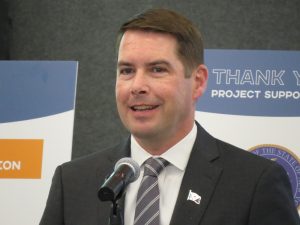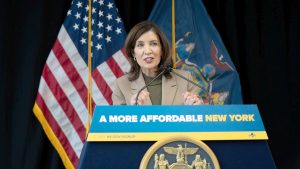I [recently] wrote to the Public Service Commission (PSC) to express my concerns about yet another example of government overreach in New York state. Last year, the Renewable Action through Project Interconnection Deployment (RAPID) Act, which dictates how major energy and electric-transmission projects get approved, was passed in the state budget. As a number of my […]
Already an Subcriber? Log in
Get Instant Access to This Article
Become a Central New York Business Journal subscriber and get immediate access to all of our subscriber-only content and much more.
- Critical Central New York business news and analysis updated daily.
- Immediate access to all subscriber-only content on our website.
- Get a year's worth of the Print Edition of The Central New York Business Journal.
- Special Feature Publications such as the Book of Lists and Revitalize Greater Binghamton, Mohawk Valley, and Syracuse Magazines
Click here to purchase a paywall bypass link for this article.
I [recently] wrote to the Public Service Commission (PSC) to express my concerns about yet another example of government overreach in New York state. Last year, the Renewable Action through Project Interconnection Deployment (RAPID) Act, which dictates how major energy and electric-transmission projects get approved, was passed in the state budget. As a number of my constituents have pointed out, the anticipated lack of input from localities in siting large-scale renewable-energy projects — regulations for which are still being finalized — is extremely unsettling.
Local governments work hard to develop land-use plans that fit the needs of the residents, businesses, and visitors in their purview. Their insights and expertise are invaluable when determining how to best utilize and protect their natural resources. I believe this is especially true in rural regions where local governments, informed by state policy, have already put together comprehensive land-use plans in line with their visions. The last thing anyone needs is another out-of-touch state agency dictating local policy.
New York State has been on the wrong path on environmental regulations for years. The passage of the Climate Leadership and Community Protection Act (CLCPA), which demands an inappropriate and unreasonable transition to the zero-emission electrification of our energy grid, was a clear signal that state lawmakers have placed scoring political points above common sense.
Further, the uncertainty surrounding these new regulations will be especially challenging as residents prepare for the economic impacts Micron Technology, which is moving into Central New York imminently, will have on the region. The housing, workforce demands, and infrastructure considerations that will come with the development are substantial, and our municipalities must be allowed to shape these impacts as they see fit. As I wrote in my letter to the PSC, now is not the time for New York State to interfere with our development by siting major projects without due diligence from local officials and residents.
Little good comes when local governments are left out of the decision-making process, and it will be discouraging to see the PSC make the same mistakes with the RAPID Act we have already seen in the wake of the CLCPA. I urge the PSC to ensure necessary collaboration with local governments, residents, businesses, and consumers. Without that collaboration, the state risks compromising thoughtful, locally driven land use plans designed to meet the needs of those they impact.
William (Will) A. Barclay, 56, Republican, is the New York Assembly minority leader and represents the 120th New York Assembly District, which encompasses all of Oswego County, as well as parts of Jefferson and Cayuga counties.
William (Will) A. Barclay, 56, Republican, is the New York Assembly minority leader and represents the 120th New York Assembly District, which encompasses all of Oswego County, as well as parts of Jefferson and Cayuga counties.



